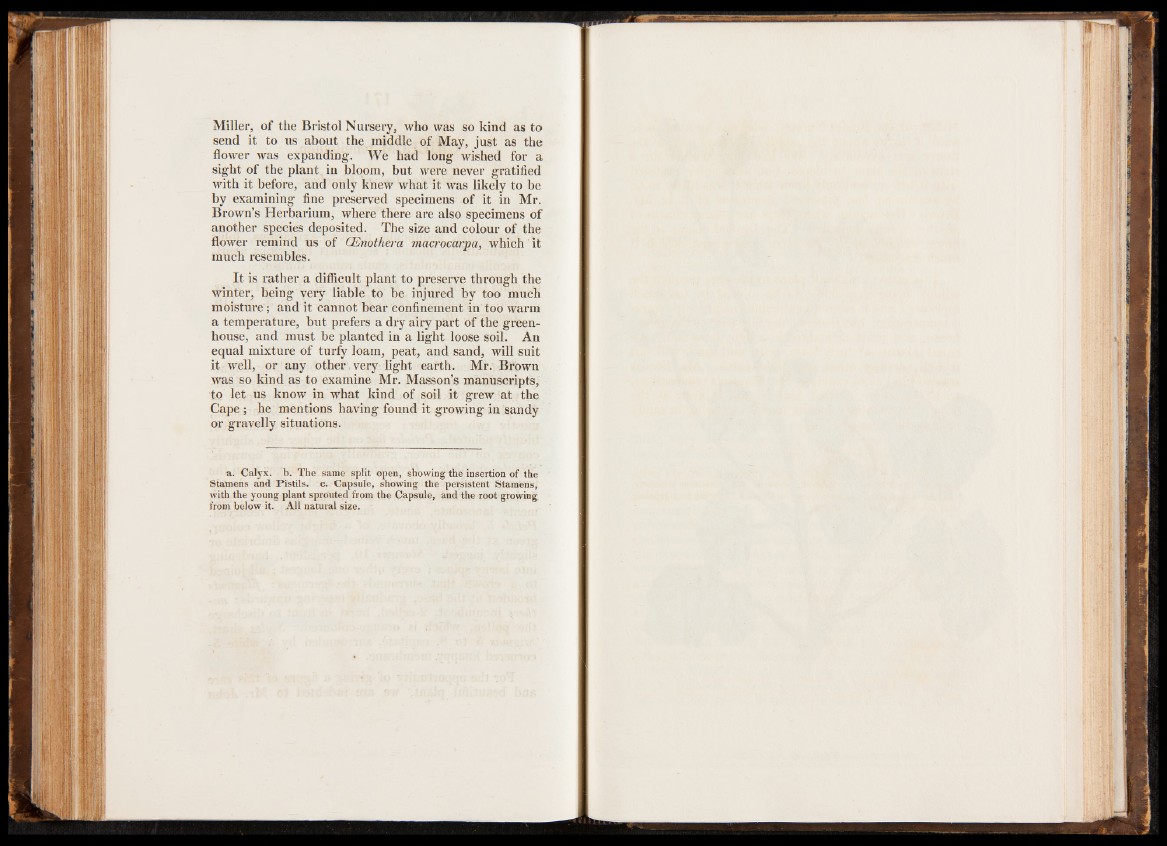
Miller, of the Bristol Nursery, who was so kind as to
send it to us about the middle of May, just as the
flower was expanding. We had long wished for a
sight of the plant in bloom, but were never gratified
with it before, and only knew what it was likely to be
by examining fine preserved specimens of it in Mr.
Brown’s Herbarium, where there are also specimens of
another species deposited. The size and colour of the
flower remind us of CEnothera macrocarpa, which it
much resembles.
It is rather a difficult plant to preserve through the
winter, being very liable to be injured by too much
moisture; and it cannot bear confinement in too warm
a temperature, but prefers a dry airy part of the greenhouse,
and must be planted in a light loose soil. An
equal mixture of turfy loam, peat, and sand, will suit
it well, or any other , very light earth. Mr. Brown
was so kind as to examine Mr. Masson’s manuscripts,
to let us know in what kind of soil it grew at the
Cape ; he mentions having found it growing in sandy
or gravelly situations.
a. Calyx, b. The same split open, showing the insertion of the
Stamens and Pistils, c. Capsule, showing the persistent Stamens,
with the young plant sprouted from the Capsule, and the root growing
from below it. All natural size.